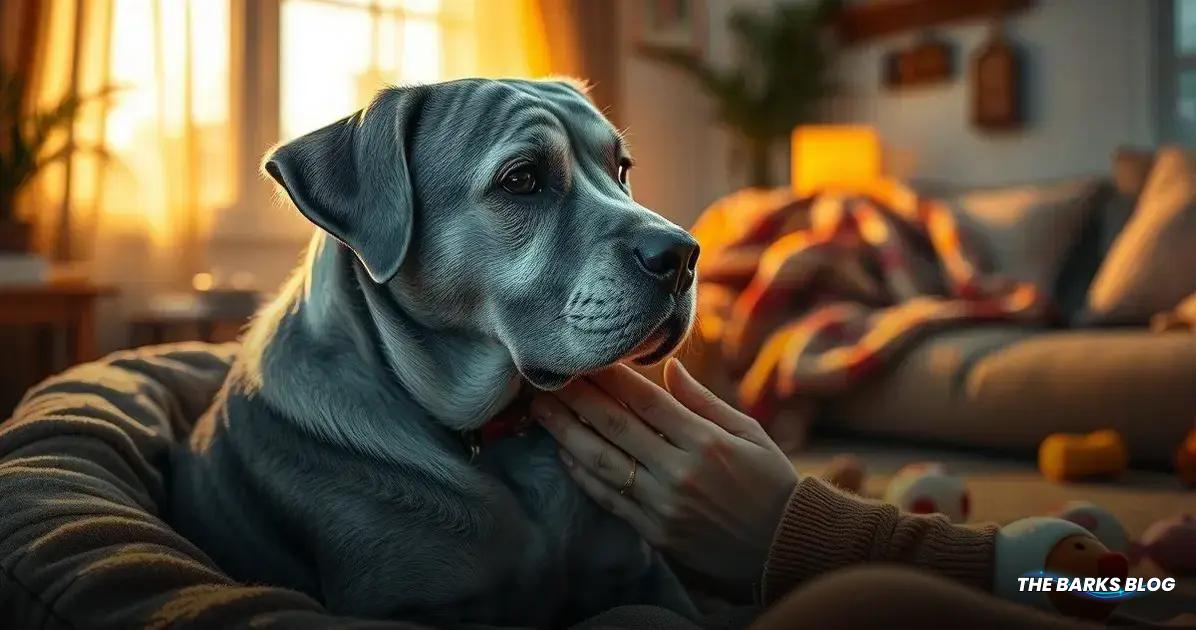Caring for dogs with sight and hearing loss involves recognizing signs such as not responding to sounds for hearing loss and difficulty recognizing faces for blindness. Owners can help deaf dogs by using visual commands and maintaining routines, while blind dogs benefit from verbal cues and a stable environment. With patience and adjustments, dogs can lead fulfilling lives despite these challenges.
As our furry friends age, they may face challenges like sight and hearing loss. Understanding the signs of these conditions is crucial for their care.

How To Tell If A Dog Is Deaf
Identifying whether your dog is deaf can be a challenging task, especially as they age. Here are some signs to watch for:
Are they responding to sound?
One of the first signs of hearing loss in dogs is their decreased reaction to sounds. If your dog stops responding to verbal commands or the familiar sounds of their food bowl, they may be losing their hearing.
Are they noticing when you enter a room?
If your dog no longer acknowledges your presence when you walk into a room, this could indicate hearing loss. Normally, dogs will greet you enthusiastically, but if they seem unaware of your arrival, it’s a concerning sign.
Are they startling easily?
Dogs with hearing loss may become easily startled when approached. If your dog seems to jump or react suddenly when you come near, it could be because they didn’t hear you coming. This sensitivity can increase as their hearing deteriorates.
Are they barking more than usual?
Increased barking can also be a sign of hearing loss. If your dog is barking more frequently, it may be due to frustration from not hearing your commands or the sounds around them. Their barking is their way of communicating, so pay attention to these changes.
Recognizing these signs early can help you take the necessary steps to support your dog as they navigate the challenges of hearing loss.

How To Care For A Deaf Dog
Caring for a deaf dog requires some adjustments, but with the right techniques, you can ensure they continue to lead a happy and fulfilling life. Here are some tips:
Teach Visual Commands
Since your dog may not respond to verbal commands, teaching them visual cues is essential. Use hand gestures, facial expressions, or even light signals to communicate commands. Consistency is key, so make sure everyone in the household uses the same signals.
Use High-Frequency Sounds
Some deaf dogs can still detect high-frequency sounds. Consider using a high-pitched voice when giving commands. This change in tone may help your dog pick up on your cues more effectively.
Maintain Routine
Keeping a consistent daily routine can help your deaf dog feel more secure. Regular feeding times, walks, and play sessions will help them understand what to expect, reducing anxiety and confusion.
Stay Visible
When leaving your dog, always let them know where you are going. You can do this by gently touching them or using visual signals to indicate your departure. This will help prevent anxiety and reassure them that you haven’t disappeared.
Be Patient and Understanding
Adjusting to life with a deaf dog takes time, both for you and your pet. Be patient and understanding as they learn new commands and routines. Positive reinforcement, like treats and praise, will encourage them to adapt.
By making these adjustments, you can help your deaf dog live a fulfilling life, full of love and companionship.

How To Tell If A Dog Is Blind
Detecting blindness in your dog can be easier than identifying hearing loss. Here are some signs to look for that may indicate your dog is losing their sight:
Do they recognize you?
If your dog takes longer than usual to recognize you from a distance, this could be a sign of vision loss. Dogs rely on both their sight and smell to identify their owners, so a delay in recognition might indicate that their eyesight is diminishing.
Can they still catch?
When playing fetch, notice if your dog is frequently missing the ball. If they seem to have trouble catching it or often miss, it could be a sign that their vision is weakening. While some missed catches can be due to laziness, consistent difficulty is worth investigating.
Do their eyes look different?
Look closely at your dog’s eyes. If you notice a cloudy or bluish tint where their pupils used to be dark, this may indicate a loss of vision. Changes in the appearance of their eyes can be a clear sign of developing blindness.
Are they bumping into things?
If your dog frequently bumps into furniture, their water bowl, or other obstacles, this is not normal behavior. Dogs that are losing their sight may struggle to navigate their environment, leading to accidents and confusion.
Being aware of these signs can help you take proactive steps to support your dog as their vision declines, ensuring they remain comfortable and safe in their surroundings.

How To Care For A Blind Dog
Caring for a blind dog requires some thoughtful adjustments, but with the right approach, you can help them adapt and thrive. Here are some effective strategies:
Teach New Verbal Commands
Since your blind dog may struggle to see visual cues, teaching them new verbal commands is essential. Use clear and distinct words like “watch” or “step” to alert them about obstacles or changes in their environment. Consistent use of these commands will help them navigate safely.
Keep a Consistent Environment
Maintaining a familiar environment is crucial for blind dogs. Try to keep furniture and belongings in the same places to prevent confusion. A consistent layout helps your dog move around confidently without the risk of bumping into things.
Encourage Exploration
While your dog may not be able to see, it’s important to encourage them to explore their surroundings. Use a long leash during walks to give them some freedom while still keeping them safe. This exploration can help them build confidence and learn their environment through smell and touch.
Use Scent and Sound
Enhance your dog’s experience by using scent and sound to guide them. You can create scent trails using treats or toys to encourage them to follow. Additionally, using bells or other sound cues can help them locate you or other objects in their environment.
Be Patient and Supportive
Adjusting to blindness can be challenging for both you and your dog. Be patient as they learn to navigate their new reality. Offer plenty of love and support, and use positive reinforcement to encourage them when they successfully follow your commands or explore their surroundings.
With these strategies, you can help your blind dog lead a happy and fulfilling life, ensuring they feel safe and loved in their environment.
Conclusion
As our dogs age, they may face challenges like sight and hearing loss, but with the right care and understanding, they can continue to lead happy, fulfilling lives.
Being attentive to the signs of these conditions allows you to provide the necessary support and adjustments to their daily routine.
By teaching visual commands for deaf dogs and verbal cues for blind dogs, maintaining a consistent environment, and encouraging exploration, you can help your furry friend adapt to their changing needs.
Remember, patience and love are key in this journey.
Ultimately, your commitment to their well-being will ensure that your dog feels secure, loved, and cherished, no matter the challenges they may face.
FAQ – Frequently Asked Questions about Dog Sight and Hearing Loss
What are the common signs of hearing loss in dogs?
Common signs of hearing loss in dogs include not responding to sounds, not noticing when someone enters the room, startling easily, and barking more than usual.
How can I tell if my dog is going blind?
Signs that your dog may be going blind include difficulty recognizing you from a distance, missing balls during play, changes in the appearance of their eyes, and bumping into objects.
What should I do if I suspect my dog is deaf or blind?
If you suspect your dog is deaf or blind, consult your veterinarian for a proper diagnosis and guidance on how to best support your dog.
Can a deaf dog still lead a normal life?
Yes, deaf dogs can lead normal lives with proper care, including visual commands, a consistent environment, and patience from their owners.
How can I help my blind dog navigate their environment?
You can help your blind dog navigate by using verbal commands, maintaining a consistent layout at home, and encouraging exploration with scent and sound cues.
Is it possible for a dog to have both sight and hearing loss?
Yes, it is possible for a dog to experience both sight and hearing loss, especially as they age. It’s important to monitor their behavior and consult a veterinarian for advice.




